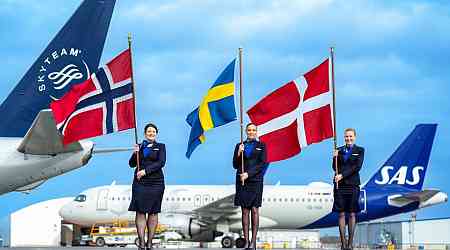This is a post that probably could have been written a decade ago. After all, the idea that Southwest would eventually start flying redeyes always seemed like a foregone conclusion. It was just a matter of when. Now we seem to be getting a little bit closer to this being a reality with about 50 daily flights coming in the not-too-distant future.
When Southwest started flying, the idea of having a redeye was never even considered. The airline only did short hops around the country, so flying overnight just wasn’t an option. Southwest didn’t touch the East Coast until the summer of 1993 when it entered Baltimore. It wasn’t until 1995 that the average flight distance rose above 400 miles.
Average Southwest Flight Distance (in Miles)
T-100 data via Cirium
In 1999, Southwest scheduled its first flight over 2,000 miles, but it just dipped its toe in. That year it flew from Las Vegas to both Baltimore and Orlando as the extended range of the 737-700 started being put to use. With an average distance today of over 700 miles, Southwest is a different airline.
But Southwest’s bread-and-butter remains short- to mid-haul flying. In fact, it still doesn’t fly all that often on long-hauls. If we look at this entire year, including seasonal flight, Southwest has only 44 routes scheduled that are over 2,000 miles. Eight of those are from Baltimore, five are from the West Coast to Florida, another five are longer Latin/Caribbean routes, and then there are 3 random longer hauls (Atlanta – Oakland, Pittsburgh – San Diego, and Vegas – RDU). None of these are the catalyst here, however.
The catalyst came in 2019 when Southwest started flying from the mainland to Hawaiʻi. Those flights are all over 2,000 miles. This year, Southwest has 23 of those routes in the schedule making up more than half of the long-haul flights in Southwest’s system.
The unique problem with Hawaiʻi is that it is very, very far and many time zones away from the East Coast. If you don’t fly redeyes, it is particularly hard to connect people all the way back to the east at the end of their vacations.
Southwest has worked its way around this by having early morning departures from the islands. For example, you can leave Honolulu this summer at 8:30am and after 50 minutes in Phoenix get back to Baltimore at 1:40am. But that is a brutal way to fly, and it also only works for Southwest cities that have late afternoon options from Phoenix and Vegas to the east. Most cities in the Southwest network are cut-off if they’re in the Eastern Time Zone.
As someone who lives on the West Coast, prefers morning flights, and can’t sleep on airplanes, I do not like the idea of having redeyes ever. But there are people who feel the opposite. I remember my friend’s father from when I was a kid who would only fly redeyes. He thought that day-time flights were wasting productivity. I remember thinking he was insane, but that difference of opinion is what makes the world go ’round.
When it comes to Hawaiʻi travel, the number of people who would prefer a redeye goes up a lot. Anything they can do to maximize their time on the islands, they’ll do.
With this growing need for actual redeye flying, Southwest had to make changes. It had issues to solve in its labor contracts and technology in order to make redeye flying work, but as far as I know, those were all fixed long ago.
Some of these problems went deep. For example, I seem to recall that Southwest used to have to end the day and stop flying entirely to reset in order to start up the next day. I don’t recall which system required this, but I remember being floored that this was a thing. (Maybe some Southwest old-timers can confirm or correct me in the comments.)
Of course, with the increase in time zones served by the airline, it has gotten closer and closer to operating 24 hours a day anyway. And it does do that anytime there are delays. But according to the schedule, Southwest does still briefly shut down for the night. Take a look:
April 15, 2024 Southwest Flights in the Air by Hour (Pacific Time)
Data via Cirium
The day starts in the 2am hour Pacific Time when those 5am departures on the East Coast launch. And the day usually ends sometime just after midnight with some of those really late Vegas – West Coast trips. Keep in mind, this is an April schedule. In summer, it may have even less of a gap, but this will be ending when redeyes begin.
Like I said, I believe most of the real hurdles like this one are gone. Southwest has a modern reservation system and a pilot contract that deals with redeyes. So now it’s just a matter of fixing all the corner case issues and getting them ramped up.
The plan is apparently to start with Hawaiʻi flying, of course, but also some Las Vegas – East runs. All of those make too much sense as low-hanging fruit. It’s more about customer preference on those routes than it is about increasing aircraft utilization.
Over time, you can imagine this growing to serve some markets that may not make sense unless it’s as utilization flying where you assume the airplane is already paid for. That, however, isn’t something that I’d expect anytime soon. Southwest sees opportunity here to give customers more options… and in some cases, create the only options it can offer for people traveling across the entire empire. It’s a customer-focused move that can pay off for everyone involved.


























